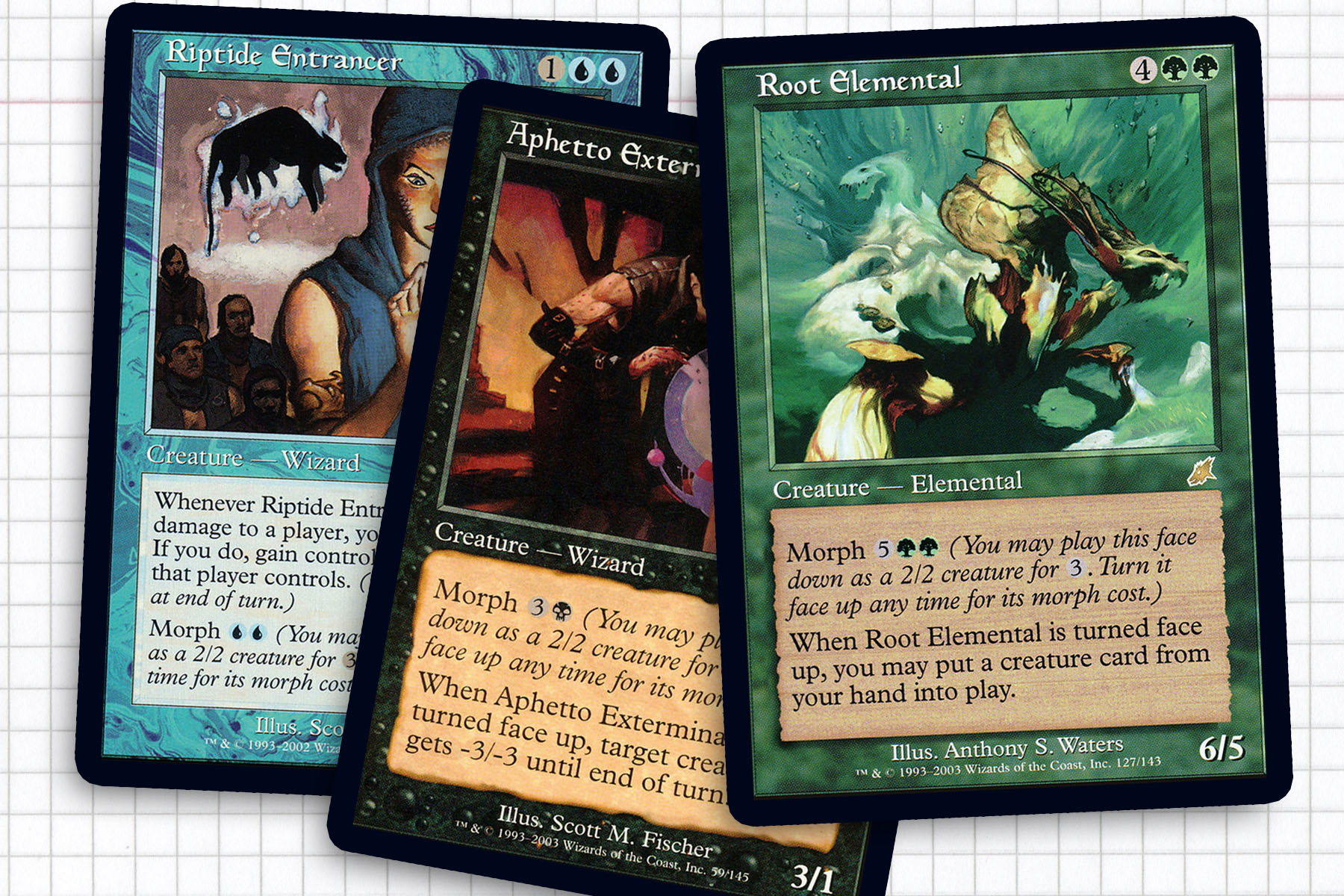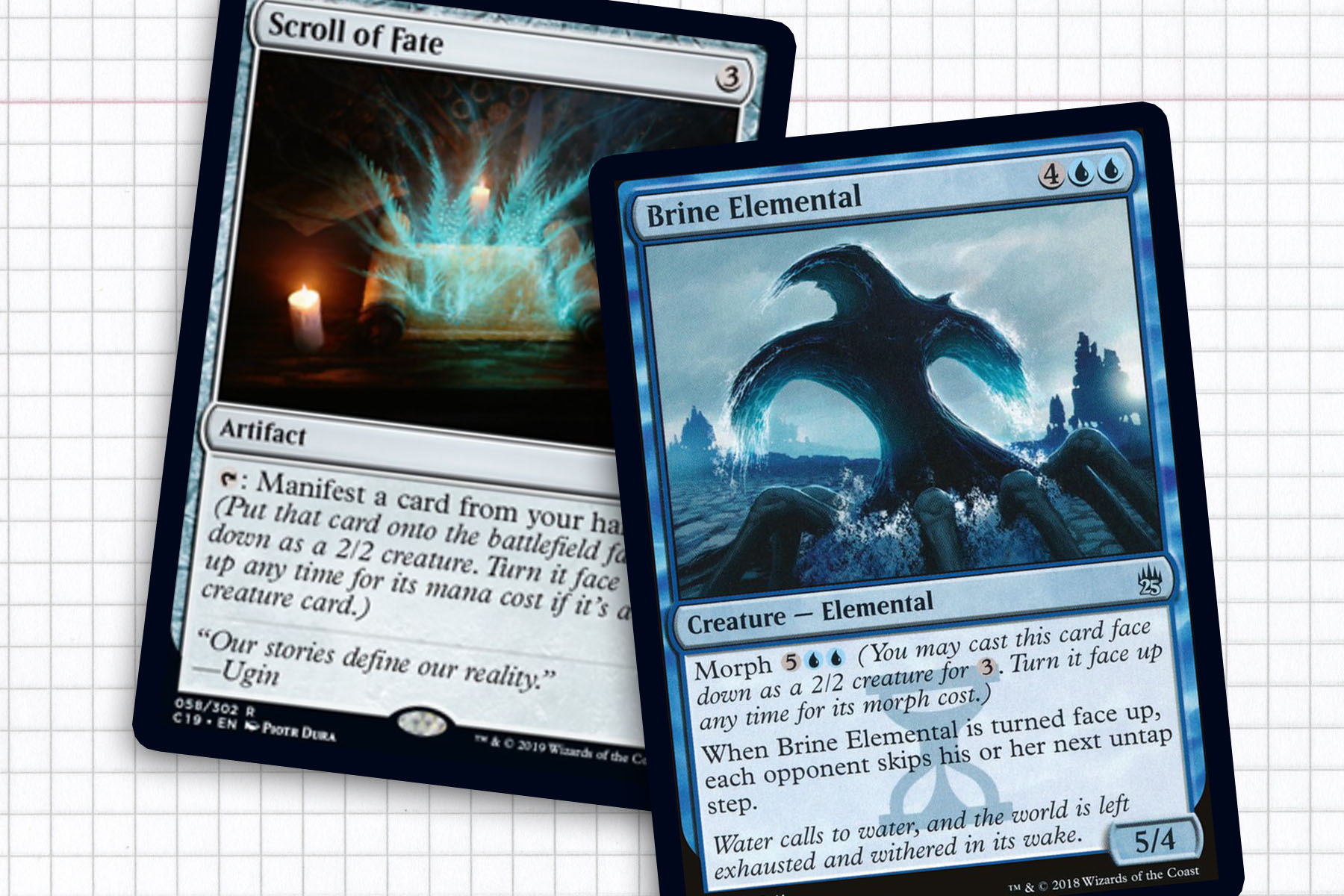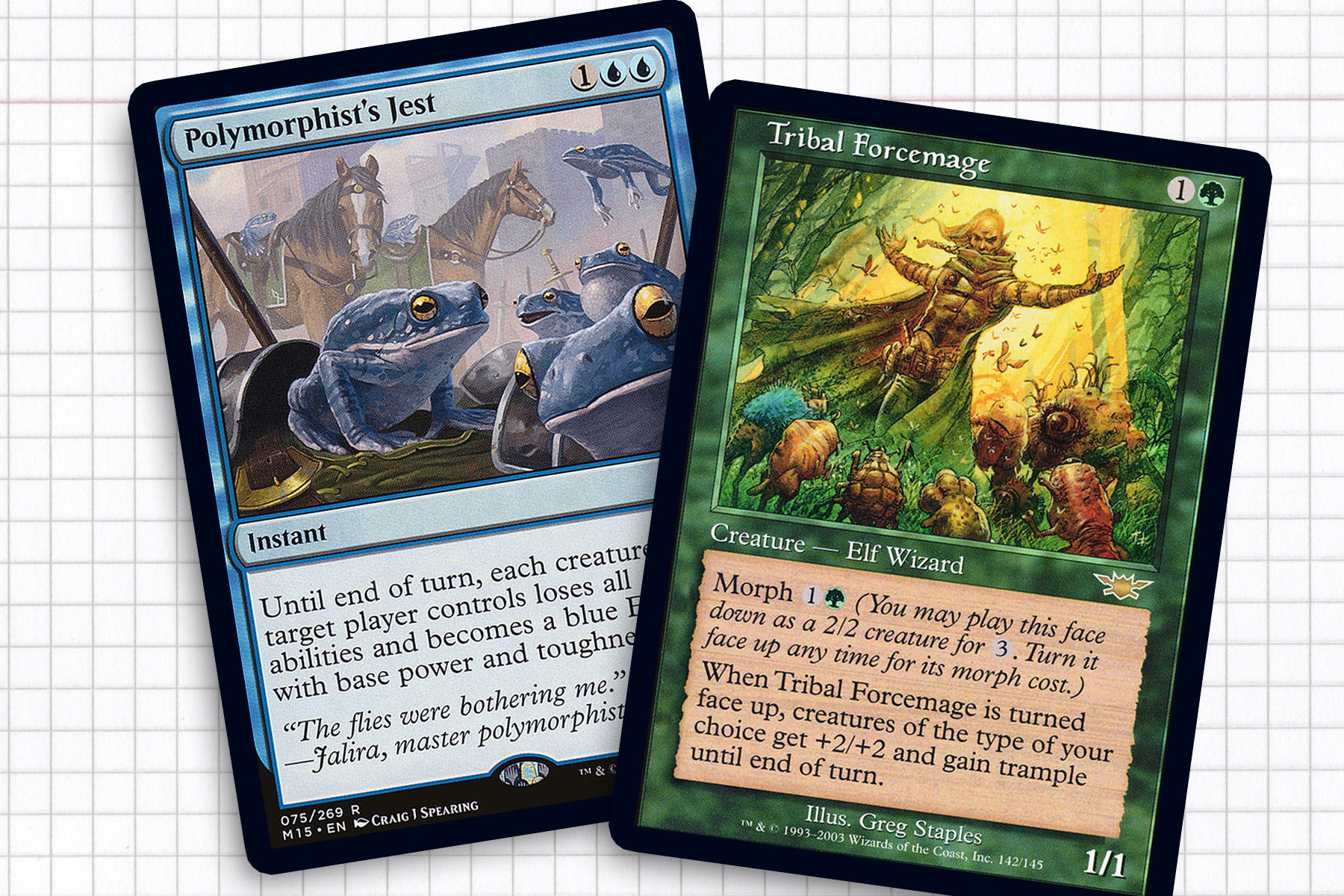This past weekend I was able to take part in a release event for the new product, Commander 2019. I chose Faceless Menace as my weapon of choice going into the event. With all four decks on display, it was clear that all of them were going to be moving significantly slower than your average game of Commander. Even so, all seemed very well balanced, and I had fun playing against each one of them over the course of the night. What really impressed me was how differently thee Faceless Menace deck played than I was expecting. I was impressed by how often cards I wanted in the deck were already included in the preconstructed version.
The morph mechanic has been held back from being a viable archetype in Commander because it lacks enablers beyond the interaction with Animar, Soul of Elements. But if you didn’t want to play a Temur deck, a general with a similar cost reduction ability like Kadena, Slinking Sorcerer was going to be very important towards breathing life into this archetype.
I’ve heard some complaints that she doesn’t allow every morph spell you cast each turn to come down from free—which would be ridiculous—but I like her endorsing a morph deck in the same fashion as Tuvasa the Sunlit endorsed an Enchantress build. Quite frankly, Kadena’s ability being limited also prevents one from breaking one of the Commander Commandments: “Thou shalt not overcommit.”

Why Wizards Tribal?
Wizards have been on my radar as a tribe to build a deck around for almost two decades. To understand why, we need to take a journey back to 2002. This was the beginning of my Magic career and a time where I bought triple digits of packs of Odyssey, for reasons that I can’t rationalize now. This was just as Onslaught was coming out and Wizards made their first attempt as building a block around tribes. It was also, ironically, the first appearance of morph.
As enticing as the Wizard creature type was, the designers set a low bar for the tribe’s power level. My guess is that Wizards looked too good in playtesting—impressive considering how Goblins and Zombies were allowed to thrive with significant power. Regardless, the Wizard tribe was thematic to me and something I could easily build around; but when the Wizard decks I would build were not able to keep up with other decks around me, I felt disenfranchised.
Fast forward to now. While I really enjoyed the games I played with the Commander 2017 Wizards deck out of the box, I was never inspired to take that deck and tune it into anything of note. Yet I was so impressed with how the Faceless Menace deck played this past weekend that I delayed other articles to do a deep dive on the possibilities Kadena offers. After making my through the first half of morphable creatures in the color identity, I began to pick up on the fact that a large chunk of the interesting creatures happened to be Wizards. I finally saw my chance to build a deck that was tribally Wizards while also playing into the unknown nature of morph.

It’s Morphin’ Time
Morph is such a fun mechanic. In this deck we can leverage it to counter spells with Disruptive Pitmage and Voidmage Prodigy, destroy artifacts and enchantments with Nantuko Vigilante, or remove creatures with Skinthinner.
The last year has been good for this deck overall. Not only have we seen the printing of a viable legend, but we also got Scroll of Fate to effectively create a 2/2 body every turn. Less obvious is the interaction that morphs have with Mystic Forge—you may have heard of this card—means that you will be able to cast morphs from the top of your deck. These interactions combined with Kadena made me really want to dig out the space in my deck rotation for a morph deck.
If you’re part of the rapidly dwindling number of people who have never played with morph, one of the big appeals is that the deck plays fairly consistently as long as you can get up to three mana on hand. Because most of the creatures in the deck can be cast for three generic mana, you often have a board of creatures that rest of the table must take seriously. This was most evident to me this past weekend while playing Ghastly Conscription, allowing me to have any number of creatures that needed to be blocked because nobody could tell which was Icefeather Aven and which was Apex Altisaur.
Moving through the deck, more established cards like Dream Chisel and Obscuring Aether can reduce mana costs of your face-down spells even if you cast more than one each turn. Few cards care about face-down spells, but we can certainly fit a few into this deck. Secret Plans provides extra value from unmorphing your creatures, and Trail of Mystery is a card I knew but never thought about how powerful it was until playing it last weekend. Lastly, Wildcall is understably overlooked; but a deck that can either control the top of its library or cares about face down spells can find value in a creature with two or more power for as little as two green mana.

Hitting Them Hard
The Wizard creature type is certainly not one that’s known for being aggressive. But in this deck we can highlight a few creatures that feed off the themes we are working with. Nameless One is easily the weakest and least remembered of its cycle, but in this deck it should be massive once plenty of Wizards have hit the table. Ixidron and Primal Whisperer, by contrast, can be powerhouses on their own or work together to make an entire board of face-down creatures. Tribal Forcemage is an often overlooked card in its own right; but in any green deck that cares about a tribe, it can be a surprise Overrun effect.
Synergy is only going to get us so far. As a morph deck, it will be important to keep a few powerful tricks in our back pocket. Mass Diminish and Polymorphist’s Jest can give us a distinct combat advantage, enabling our colorless 2/2s to outclass another player’s battlefield. Dire Fleet Ravager is a great way to lower the whole table’s life totals and change the clock, even if only by a turn or two. And Whisperwood Elemental provides an ever-growing battlefield and protection from mass removal—something we certainly need.
Morph is not an obviously powerful mechanic, but the ability to commit creatures to your board without having to be concerned with the exact colors you can produce from your lands means that you always have some agency in the game. I’m very happy to see morph receive a much-needed shot in the arm. I look forward to exploring more of what can be done with both morph and its sister mechanic, manifest.
Ryan Sainio is a Graphic Designer who writes about EDH and the EDH community. He has been playing Magic: The Gathering since 7th Edition in 2002 and values flavorful and fun gameplay over competitively optimized decks.

